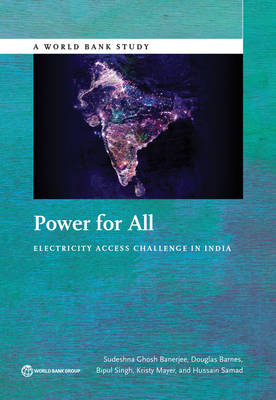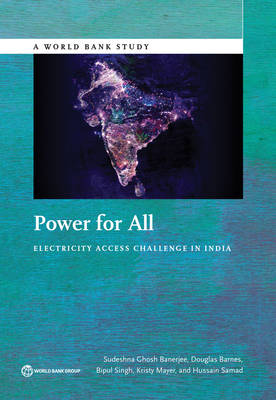
- Afhalen na 1 uur in een winkel met voorraad
- Gratis thuislevering in België vanaf € 30
- Ruim aanbod met 7 miljoen producten
- Afhalen na 1 uur in een winkel met voorraad
- Gratis thuislevering in België vanaf € 30
- Ruim aanbod met 7 miljoen producten
Zoeken
Power for All
Electricity Access Challenge in India
Sudeshna Ghosh Banerjee, Douglas Barnes, Bipul Singh, Kristy Mayer, Hussain Samad
€ 42,45
+ 84 punten
Omschrijving
India is a leading developing country in providing electricity to rural and urban populations. By late 2012, the national electricity grid had reached 92 percent of India's rural villages, or about 880 million people. Yet, approximately 311 million people-mostly those in rural areas-still live without electricity. Less than half of all households in the poorest income group have electricity. Even among households with electricity, hundreds of millions lack reliable supply and experience power cuts almost daily. Achieving universal access to electricity by 2030 is not fi nancially prohibitive for India. The challenge of providing electricity for all is achievable, ensuring that India joins such countries as China and Brazil in reaching out to even its remotest populations. Policies will need to be aligned with the principles followed in other successful international programs. The potential benefi ts of electrifi cation for those without service are quite high. The benefi ts of lighting alone would approximately equal the investments necessary to extend electricity for all. Households with electricity consume more than 100 times as much light as do households with kerosene for about the same amount of money. Without quality energy services, households often face entrenched poverty, poor delivery of social services, and limited opportunities for women and girls. This book will be of interest to a wide audience, including policy makers, experts and managers in the international development community, and those in academia.
Specificaties
Betrokkenen
- Auteur(s):
- Uitgeverij:
Inhoud
- Aantal bladzijden:
- 108
- Taal:
- Engels
- Reeks:
Eigenschappen
- Productcode (EAN):
- 9781464803413
- Verschijningsdatum:
- 17/11/2014
- Uitvoering:
- Paperback
- Formaat:
- Trade paperback (VS)
- Afmetingen:
- 178 mm x 254 mm
- Gewicht:
- 204 g

Alleen bij Standaard Boekhandel
+ 84 punten op je klantenkaart van Standaard Boekhandel
Beoordelingen
We publiceren alleen reviews die voldoen aan de voorwaarden voor reviews. Bekijk onze voorwaarden voor reviews.








